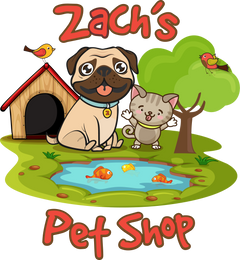Living with a dog often means living with dog hair. Sometimes, normal shedding becomes excessive. This leaves many pet owners wondering why their dog sheds so much.
This article covers the normal shedding cycle, health concerns, and effective grooming strategies.
Key Takeaways:
- Shedding is normal, but sudden changes or bald spots may indicate a health issue.
- Some breeds shed more than others, so choose a low-shedding breed if you're sensitive to fur.
- Regular brushing and grooming are the most effective ways to manage shedding.
- Dogs shed more in spring and autumn due to seasonal coat changes.
- Feeding your dog a balanced diet helps maintain a healthy coat and minimise shedding.
Table Of Contents:
- Why Do Dogs Shed?
- How To Manage Dog Shedding
- Allergies
- The Shedding Seasons
- When to Worry About Dog Shedding
- FAQs
- Ian's Wrap
Why Do Dogs Shed?
Shedding is a natural process where dogs lose dead or damaged hair. New, healthy hair grows in its place.
The hair shedding cycle consists of three phases. In the anagen phase, new hair growth begins. The catagen phase is a transitional stage, while the telogen phase marks the end of growth, during which the hair follicle sheds the old hair to prepare for new growth.
This cycle depends on breed, age, hormones, environment, and overall health. Many factors impact how much a dog sheds.
Popular dog breeds like Labrador Retrievers, Huskies and German Shepherds are notorious shedders. Their thick double coat protects them from the elements, contributing to the amount of hair they shed.
Other breeds, such as Poodles and Maltese Terriers, shed less and are good choices if you’re sensitive to pet hair. If shedding is a concern, choosing the right dog breed can make all the difference.

How To Manage Dog Shedding
You can’t stop shedding entirely. Regular grooming with the right grooming tools, like a slicker brush to remove dead hair, is key to managing it. This includes brushing and bathing.
Brushing
Brushing removes loose hair and distributes natural oils, promoting a healthy and shiny coat. Regular brushing reduces excess hair and the appearance of shedding.
Finding the right shedding tool can also help remove dead hair from your dog’s coat. Brushing frequency depends on your dog’s coat type, some dogs need daily brushing, others only need it several times a week. For thick coated dog breeds you are looking at daily brushing.
Bathing
Frequent bathing isn't always good, but occasional baths help loosen dead hair. It also cleans the skin and coat, preventing skin problems. Choose a suitable dog shampoo.
Avoid human shampoo, which can dry a dog's skin, possibly worsening shedding. Dry skin can lead to a dog scratching more and shedding even more.
Grooming Salons
Going to a dog grooming salon can be an effective way to control shedding because professional groomers can help manage your dog's coat through regular brushing, bathing, and trimming. These services remove loose hair and dead skin cells, preventing excess shedding around the home.
Groomers also have specialized tools that can reach the undercoat (if your dog has one), which may be difficult to manage at home. Regular grooming helps reduce matting and tangles, which can lead to increased shedding if not addressed.
Additionally, salons often offer services like de-shedding treatments or conditioning that can improve the health and appearance of your dog's coat, potentially reducing shedding over time.
Allergies
If you have allergies, controlling dog shedding can minimise allergens. Low-shedding ( hypoallergenic ) breeds should be considered before purchasing.
Control contact or invest in air filters. Frequent dusting, vacuuming, and cleaning remove fur and keep your home allergen-free. Regular cleaning of grooming tools can also help.
The Shedding Seasons
Most dogs experience seasonal shedding, often shedding more in the months before and after winter. They adjust to changing temperatures during these times.
Daylight hours play a role in regulating a dog's natural clock and coat growth. Exposure to sunlight also influences how a dog's coat changes over time.
A coat "blow" is an intense shedding period. This is especially common in double-coated dogs as they shed their thick undercoat in large clumps.

When to Worry About Dog Shedding
Sometimes, excessive shedding signals a deeper issue. Watch for hair loss, a dull coat, or abnormal shedding.
Consult a vet if you notice unusual balding patches, excessive itching, or skin irritation. Changes in appetite, thirst, or lethargy also warrant attention. Changes in coat texture or behaviour are warning signs too.
A vet can pinpoint the reason. Common issues are allergies, parasites, a hormonal imbalance, or stress.
Sometimes, the reason is more serious, including infection or IBD ( Inflammatory Bowel Disease ). Getting help when there are signs of abnormal shedding or other skin problems is critical to good pet care.
FAQs
How do I stop my dog from shedding so much?
You can’t completely stop shedding, but you can reduce it. Regular brushing, a healthy diet, and appropriate bathing help keep shedding under control. Choose a healthy dog food and be sure to brush often with the right tools.
What months do dogs shed the most?
Shedding seasons are usually in spring and autumn. Dogs prepare their coats for the warmer months in spring and the cooler months of autumn. They grow new hair follicles according to seasonal needs.
What is dog shedding?
Shedding is a natural process where dogs lose old or damaged fur, for new healthy fur to grow in its place.
Ian's Wrap
Dog shedding is a fact of life for dog owners. Understanding the shedding process and reasons for it can help you to take proper action to care for your furry friend. Knowing the whys and how to manage it makes a difference.
It helps keep your home cleaner and your dog healthier. It strengthens the bond between you and your dog. Regular grooming, proper bathing, and knowing about the different coat types are good practices to employ when reducing shedding.

